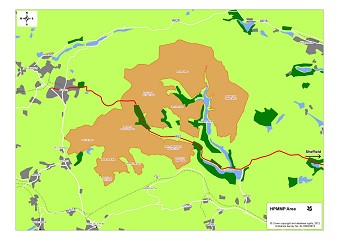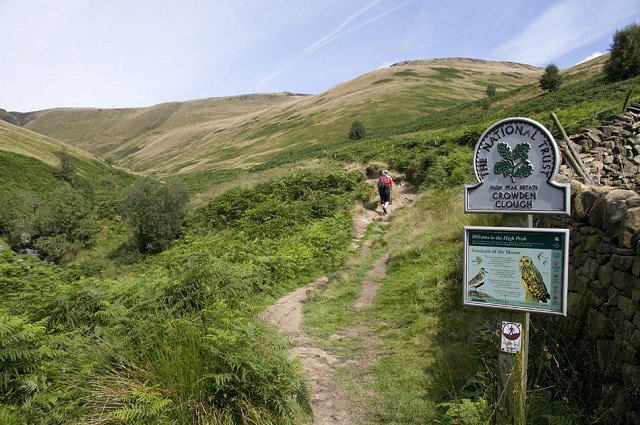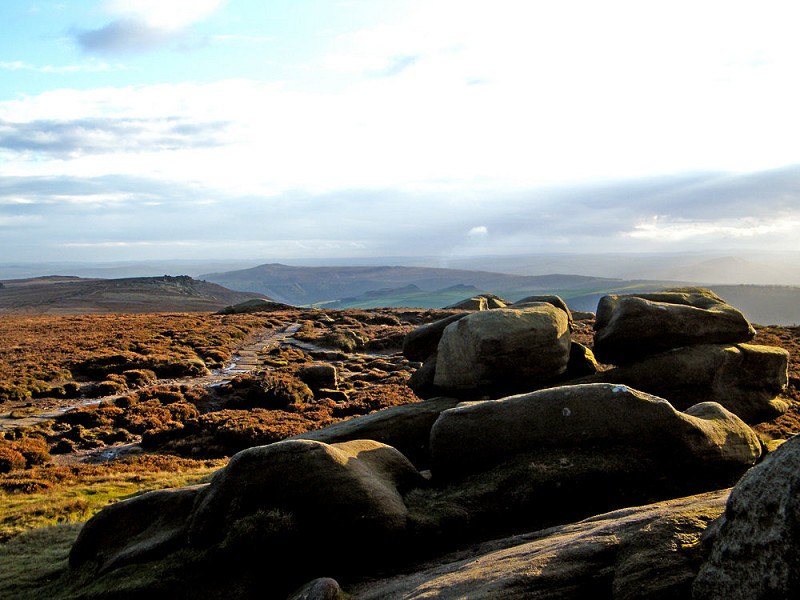
The future of a key part of the Peak District – the High Peak Moors of the Upper Derwent, Bleaklow and Kinder – is being considered now. Landowners the National Trust would like to hear your views on their new 25-year draft Vision and Plan.
In what they're calling a unique opportunity, the Trust is having a comprehensive appraisal of how the 10,000ha of moorland that they own and manage in the High Peak can best deliver Trust and and others' objectives in future - from public access and habitat restoration to contributing to the local economy and helping mitigate climate change.
Current agreements under which these moors are managed are ending in the next year or so.
'It is now the right time to review the work that has taken place,' say the Trust '[to] take account of current circumstances and new priorities and explore what further changes are needed to take us forward in the management of these fragile and rare habitats.'
The consultation on the draft plan, launched today, should help the Trust understand how best to enable high quality conservation and access, they say.
Since late 2011 the Trust has been discussing and collecting views on the future management of the moors with tenants, local and wider interests, partners and those who use the moors for recreation.
The Trust aims to help people better understand the true value of the moors and have a role in caring for them.

'The National Trust cares for special places for the benefit of everyone' says Jon Stewart, Peak District General Manager for the conservation organisation.
'In line with this purpose, we want to engage people in caring for this very special area that we look after on the nation's behalf. We believe the moors have a huge potential to deliver public benefit in so many ways – an amazing day out for visitors, internationally important wildlife, good quality water, valuable carbon store and a key role in a vibrant local economy.'
The draft plan proposes large-scale habitat restoration, and the Trust are keen to see more natural vegetation over a significant proportion of the area. The draft plan suggests that all future land management such as farming and grouse shooting should enhance the delivery of their conservation objectives. This may mean some changes, for instance in moorland burning.
Yet the moors sit within a larger context of upland farms and settlements, so a major aim of the Vision and Plan will also be to provide a more secure future for farming in the area, say the Trust, based on delivering a range of public benefits and what they're calling 'multi-purpose land management'.
'We believe that making a living on the High Peak moors is about delivering a wide range of goods, one of which
is livestock but also including, for example, clean water and public access' they say.

The plan mentions ideas for new markets such as more accommodation provision, adding value to traditional farm produce, and enabling other business opportunities such as payments for providing public goods like drinking water and carbon storage.
What about public access?
The Trust will continue to promote and support access, they say, with an ongoing programme of path maintenance and provision of visitor facilities able to handle the numbers of people. Yet they recognise the value of remote land too, and want the less accessible areas to remain as they are.
As for signposts:
'We can use more signage and waymarking in our honeypot sites where they are most needed and less in our more remote areas where visitors are hoping to get away from it all' they say.
People have been involved in this area for millennia. The open, rugged landscape enjoyed by thousands today looks wild but the moors have been shaped by man largely through sheep farming and more recently grouse moor management. The High Peak Moors are also at the heart of the decades-long movement to secure access on foot to open country.
The moors are a working landscape, providing a living for local residents as well as a "green lung" for the thousands of visitors from Manchester, Sheffield and beyond. They are of outstanding wildlife, landscape and cultural value. What's more, they are the harvesting ground for much of the water supply for the Midlands and parts of North West England; water from the High Peak moors runs straight into drinking water reservoirs.
The moors have a role in the climate change challenge too, say the Trust. Most of the moors are blanket bog, made up of peat formed by dead plants trapped in waterlogged soils. As such, they are a massive store of carbon (there is more carbon stored in UK peat than in the forests of Britain and France combined) and one of the Trust's aims in the plan is to increase the role these moors can play in capturing carbon and helping to combat climate change.
The areas owned by the National Trust and subject to the Vision and Plan comprise Kinder, Park Hall, Lady Clough and Alport Moor, Blackden and Black Ashop Moor, Ashop, Blackley Hey and Blackden, Nether and Upper Moors, Birchinlee, Ronksley, Derwent and Howden, South Head Moor and East Crowden.
To see the Draft Vision and Plan go here, and to comment go to the consultation here. The consultation period ends 30 November 2012.















Comments